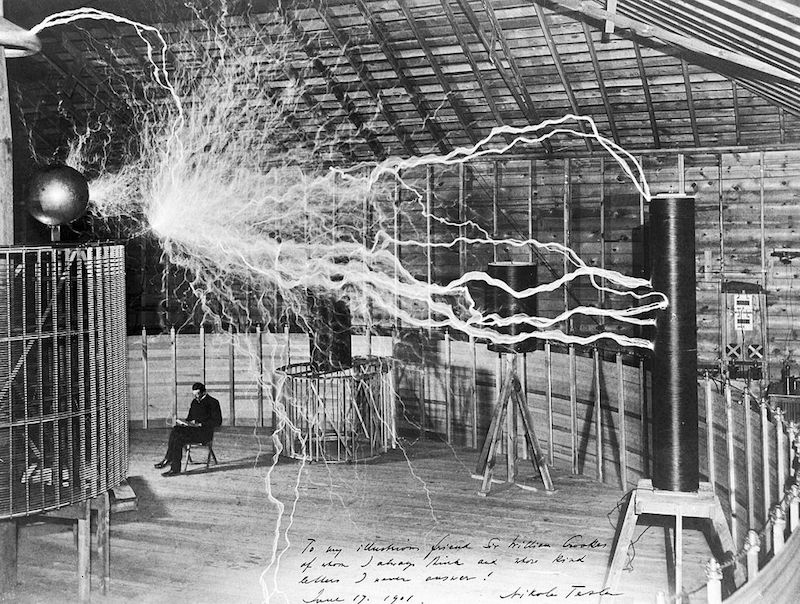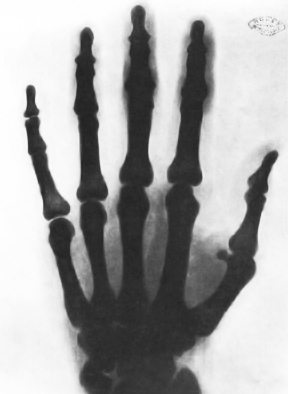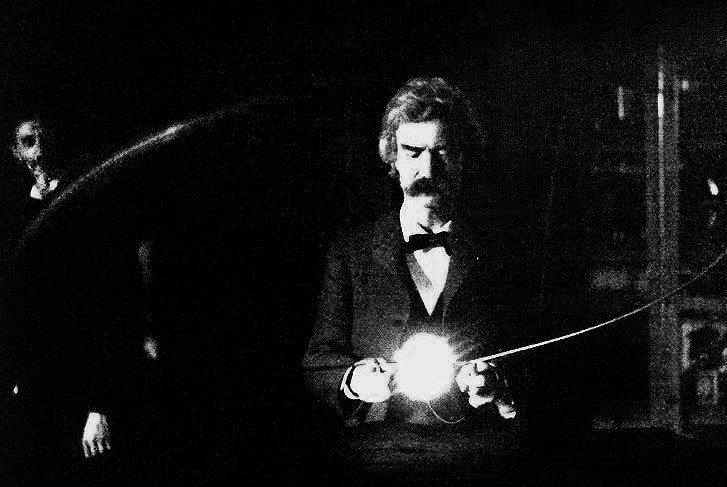Nikola Tesla
Episode #6 of the course Inventors who changed the world
Nikola Tesla (1856-1943) was a Serbian-American inventor, engineer, physicist, and visionary who invented alternating current, wireless power transmission, the induction motor, and the Tesla coil, an essential element of early radio devices. Tesla’s alternating current (AC) beat out Edison’s direct current to light the world, and Tesla rightly claimed to have beaten Marconi to the invention of wireless signaling. Tesla also envisioned solar energy and designed the first hydroelectric power generator at Niagara Falls.
 Nikola Tesla, aged 34
Nikola Tesla, aged 34
Tesla’s most important discovery was his first—the idea of generating currents by induction from a rotating magnetic field, the basis of AC power. He visualized this motor at the age of 25 while still a student (who never finished college) in Austria.
In 1882, Tesla joined the Edison company in Paris and Strasbourg, where he built his first induction motor and was soon invited to come work for Edison in America in 1884. He worked for Edison for six months and quit for reasons unknown, but Edison had just shelved Tesla’s designs for a better arc lamp.
Edison’s lamps were weakly lit by DC power, which required frequent power stations because it was difficult to rise to the high-voltage necessary for efficient long-distance transmission. Tesla’s AC power solved this problem by flowing in both directions through the same power lines in rapid cycles, during which it can be quickly transformers to high voltages. In 1888, George Westinghouse bought the patent rights to Tesla’s system of AC dynamos, transformers, and motors, initiating the “war of the currents” with Edison.
 A multiple exposure picture of Tesla sitting next to his “magnifying transmitter” generating millions of volts. The 7-metre (23 ft) long arcs were not part of the normal operation, but only produced for effect by rapidly cycling the power switch.
A multiple exposure picture of Tesla sitting next to his “magnifying transmitter” generating millions of volts. The 7-metre (23 ft) long arcs were not part of the normal operation, but only produced for effect by rapidly cycling the power switch.
Edison opposed AC because he was already invested in a DC empire in New York and tried to convince the public that high voltage AC was too dangerous. Tesla countered by demonstrating the safety of AC in his laboratory, where he would light bulbs by holding them in his hands as AC power flowed through his body.
Post-Edison, Tesla experimented with X-ray photography, carbon button lamps, electrical resonance, and wireless. He demonstrated lighting lamps wirelessly with high-frequency, high-voltage power from Tesla coils. The Tesla coil invented in 1891 is a high-voltage AC induction transformer with many applications, including early radio technology. Tesla patented a design for radio transmission in 1896 and transmitted waves across Manhattan that same year. In 1898, he demonstrated a remote-control boat in Madison Square Garden. Tesla’s priority over Marconi in the invention of radio is now legally recognized.
 X-ray of a hand taken by Tesla, c. 1896
X-ray of a hand taken by Tesla, c. 1896
From 1899 to 1900, Tesla lived and experimented in a laboratory on Pike’s Peak above Colorado Springs. He built huge coils there and proved that the Earth itself possesses a stationary electrical field and can be made to resonate; he lit lamps wirelessly from a distance of 25 miles and generated powerful lightning strikes on his laboratory. At some point there, Tesla thought he might be receiving wireless signals of extraterrestrial origins, but putting two and two together, people have figured out that he was probably receiving signals generated by Marconi’s or other early radio experiments elsewhere!
Tesla developed a vision of transmitting the Earth’s electrical power freely and wirelessly around the globe and began construction of the first broadcasting tower on Long Island in 1900, financed by J.P. Morgan. It was never completed, and we know now that it could not have worked.
 Mark Twain in Tesla’s South Fifth Avenue laboratory, 1894
Mark Twain in Tesla’s South Fifth Avenue laboratory, 1894
Tesla had few close friends (one being Mark Twain) and suffered from OCD and other eccentricities. He was ridiculed for extreme claims, such as having invented a death ray capable of destroying planes from 250 miles away. By the end of his life, he lived alone and poor in a New York hotel room, spending his days in a park surrounded by pigeons and his nights solving scientific problems in his head.
Continuing with the theme of under-appreciated visionaries, our next lesson will recount the works of Ada Lovelace, who wrote computer programs before computers existed.
Quotes
“The scientists of today think deeply instead of clearly. One must be sane to think clearly, but one can think deeply and be quite insane.” – Nikola Tesla
“I don’t care that they stole my idea… I care that they don’t have any of their own” – Nikola Tesla
“The present is theirs; the future, for which I really worked, is mine.” – Nikola Tesla
“Our virtues and our failings are inseparable, like force and matter. When they separate, man is no more.” – Nikola Tesla
“Of all things, I liked books best.” – Nikola Tesla
Recommended book
Nikola Tesla: Imagination and the Man That Invented the 20th Century by Sean Patrick
Share with friends

